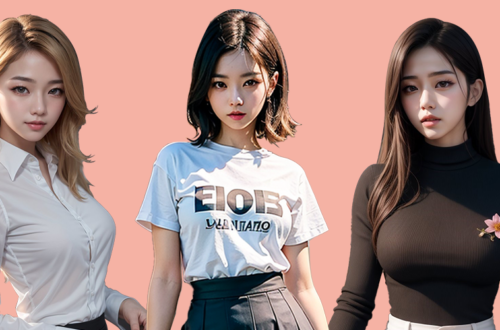
Experience the Magic of Korean Traditional Dance Performances
부천op Get ready to immerse yourself in the mesmerizing world of Korean traditional dance performances. Korea’s rich cultural heritage is reflected in its traditional dance, which has a long and vibrant history dating back to ancient times. Whether you’re a dance enthusiast or simply looking for an unforgettable cultural experience, traditional Korean dance performances offer a stunning display of artistry and culture that will leave you mesmerized.
In this section, we’ll explore the history of Korean traditional dance, the cultural significance of these performances, and the different dance forms that showcase the beauty and grace of Korean dance culture.
Key Takeaways
- Korean traditional dance performances showcase the artistry and cultural heritage of Korea.
- Traditional Korean dance has a rich history dating back to ancient times.
- These performances are deeply rooted in Korean culture and often represent myths and legends.
- There are many different forms of traditional Korean dance, including folk dance performances.
- Witnessing the incredible skill of Korean dance performers is a truly unforgettable experience.
Discover the Beauty of Traditional Korean Dance
Korean dance culture is deeply rooted in tradition, with many different forms of dance representing various regions, social classes, and rituals. Traditional Korean dance is an intricate art form that requires years of training and dedication to master. From elegant court dances to energetic folk performances, each dance form tells a unique story that reflects the history and culture of Korea.
The Many Forms of Korean Dance
There are numerous traditional Korean dance forms, each with their own distinctive style and movements. The graceful court dances known as “jeongjaemu” were originally performed in the royal palace and are characterized by their gentle, flowing movements and colorful costumes.
Folk dances are another popular form of Korean dance. These lively performances often feature energetic movements and vibrant costumes, with many dances celebrating the changing of the seasons, harvests, and other important life events. “Salpuri” is a well-known folk dance that symbolizes spiritual purification and is performed at important ceremonies and festivals.
The Artistry of Traditional Korean Dance
Traditional Korean dance performances are a stunning display of artistry and skill. The intricate movements, elaborate costumes, and precision choreography all come together to create a mesmerizing spectacle that captivates audiences. From the subtle gestures of court dances to the dynamic energy of folk performances, traditional Korean dance is a true feast for the senses.
Experience the Magic of Korean Folk Dance Performances
If you’re looking to experience the magic of traditional Korean dance, attending a folk dance performance is a must. These lively and colorful performances showcase the beauty and vibrancy of Korean culture, with each dance telling a unique story. With a rich history and captivating artistry, traditional Korean dance is truly a wonder to behold.
Delve into the Cultural Significance
Traditional Korean dance events and performances hold great cultural significance, deeply rooted in Korean history and traditions. These performances often represent myths, legends, and rituals that have been passed down through generations.
One of the main reasons why traditional Korean dance performances are so important is that they help to preserve and celebrate Korean heritage. These performances allow audiences to experience the rich tapestry of Korean culture, including its unique traditions, customs, and values.
Furthermore, traditional Korean dance events provide a window into Korean history, allowing audiences to learn about the country’s past and how it has influenced Korean culture today. From the colorful costumes to the intricate movements, traditional Korean dance performances offer a unique glimpse into the beauty and complexity of Korean history and culture.
Overall, traditional Korean dance events and performances are not just about entertainment. They are a way to honor and celebrate Korean traditions and history, and to share them with the world. From the vibrancy of the costumes to the grace of the movements, traditional Korean dance performances are a true cultural treasure.
Appreciate the Artistry and Skill
Korean dance performances are a beautiful expression of artistry and skill. From the intricate footwork to the elaborate costumes, these performances showcase the incredible talent of the dancers. It is truly a sight to behold as they bring traditional dances to life with precision and grace.
The choreography of Korean dance performances is carefully crafted to tell a story and evoke emotion. Each movement is intentional and serves a specific purpose, whether it is to convey a myth or legend or to celebrate a ritual. The dancers are able to convey these meanings through their movements and facial expressions, creating a powerful and captivating performance.
The costumes used in Korean dance performances are also an important aspect of the artistry. Each costume is carefully crafted to reflect the specific dance and its cultural significance. The colors, materials, and designs are all chosen with care to create a stunning visual display that adds to the overall performance.
The skill of the dancers is truly remarkable. Each movement is executed with precision and control, making it seem effortless. The dancers spend years perfecting their craft through rigorous training and dedication. They are able to convey the beauty and elegance of traditional Korean dance with their movements, leaving audiences in awe.
In conclusion, Korean dance performances are a testament to the power of artistry and skill. They showcase the beauty of traditional Korean dance and highlight the incredible talent of the dancers. From the carefully crafted choreography to the stunning costumes, these performances are a must-see for anyone seeking to experience the magic of Korean culture.
Conclusion
Wrapping up our journey through the world of Korean traditional dance performances, we have gained a newfound appreciation for the enchanting cultural heritage of Korea. From the rhythmic movements of traditional Korean dances to the elaborate costumes and stunning choreography, these performances offer a magical insight into the history and beauty of Korea.
As we have seen, traditional Korean dance forms, including folk dance performances, have been passed down through generations and showcase the vibrant and colorful culture of Korea. These cultural events play a significant role in preserving and celebrating Korean heritage, often representing myths, legends, and rituals.
Moreover, we have witnessed the incredible artistry and skill displayed by the performers in bringing traditional Korean dances to life. The grace and precision with which they execute these movements, accompanied by traditional Korean music, have captivated audiences around the world.
So, if you want to experience the magic of Korean traditional dance performances, do not miss the chance to witness these amazing events. You will undoubtedly be mesmerized by the rich cultural heritage, artistry, and skill that these performances offer.
FAQ
What is traditional Korean dance?
Traditional Korean dance refers to the various dance forms that have been passed down through generations in Korea. It encompasses a wide range of styles, including court dances, folk dances, and ritual dances.
What is the cultural significance of Korean traditional dance performances?
Korean traditional dance performances hold great cultural significance as they often portray myths, legends, and rituals that are deeply rooted in Korean history and traditions. They play a crucial role in preserving and celebrating Korean heritage.
What can I expect from a traditional Korean dance performance?
Traditional Korean dance performances are a mesmerizing display of artistry and skill. You can expect to witness intricate movements, elaborate costumes, and stunning choreography that showcase the grace and beauty of Korean culture.
Are there different forms of traditional Korean dance?
Yes, traditional Korean dance encompasses various forms, including court dances that were performed in the royal courts, folk dances that reflect the vibrant and colorful culture of different regions in Korea, and ritual dances that are associated with religious ceremonies.
Where can I experience traditional Korean dance performances?
Traditional Korean dance performances can be experienced in various cultural events, festivals, and theaters in Korea. Additionally, international tours and performances take place, giving audiences around the world the opportunity to witness the magic of Korean traditional dance.





